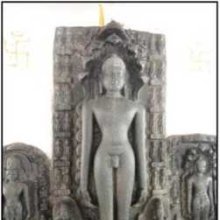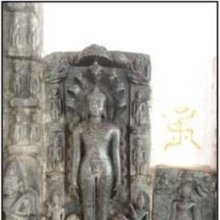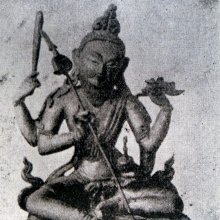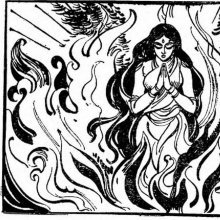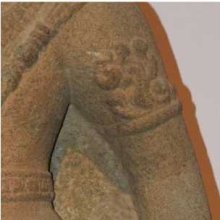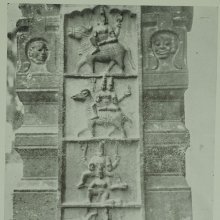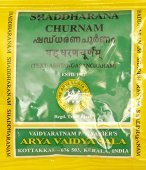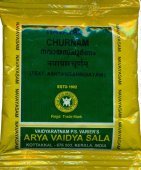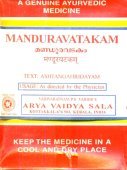Ani, Āṇi, Āni, Aṇi, Ānī, Âni, Aṉi, Āñi, Āṉi: 23 definitions
Introduction:
Ani means something in Hinduism, Sanskrit, Buddhism, Pali, the history of ancient India, Marathi, Jainism, Prakrit, Hindi, biology, Tamil. If you want to know the exact meaning, history, etymology or English translation of this term then check out the descriptions on this page. Add your comment or reference to a book if you want to contribute to this summary article.
Images (photo gallery)
(+19 more images available)
In Hinduism
Ayurveda (science of life)
Veterinary Medicine (The study and treatment of Animals)
Source: Shodhganga: Portrayal of Animal Kingdom (Tiryaks) in Epics An Analytical studyAṇi (अणि) (lit. “the point of the nail or f a sharp stake”) is a synonym (another name) for the Hawk/Falcon (Śyena), according to scientific texts such as the Mṛgapakṣiśāstra (Mriga-pakshi-shastra) or “the ancient Indian science of animals and birds” by Hamsadeva, containing the varieties and descriptions of the animals and birds seen in the Sanskrit Epics such as the Ramayana and Mahabharata.
Unclassified Ayurveda definitions
Source: Wisdom Library: Āyurveda and botanyĀṇi (आणि) is the name of a specific marma (vital points) of the human body, according to the Aṣṭāṅgahṛdaya-saṃhitā. When affected severely, these marmas causes death. The commonly accepted number of marmas in the human body, as described in the Suśruta-saṃhita, is 107 divided into 5 categories: the muscular, vascular, ligament, bone and joints.
The Aṣṭāṅgahṛdaya-saṃhitā by Vāgbhaṭa is a classical Sanskrit treatise dealing with Āyurveda dating from the 6th-century. Together with the Suśruta-saṃhitā and the Caraka-saṃhita, it is considered one of the three main Indian medical classics

Āyurveda (आयुर्वेद, ayurveda) is a branch of Indian science dealing with medicine, herbalism, taxology, anatomy, surgery, alchemy and related topics. Traditional practice of Āyurveda in ancient India dates back to at least the first millenium BC. Literature is commonly written in Sanskrit using various poetic metres.
Vyakarana (Sanskrit grammar)
Source: Wikisource: A dictionary of Sanskrit grammarAni (अनि).—Kṛt affix in the sense of curse, e.g. अजीवनिस्ते शठ भूयात् (ajīvaniste śaṭha bhūyāt); cf.आक्रोशे नञि अनिः (ākrośe nañi aniḥ) P.III.3.112. This affix अनि (ani) gets its न् (n) changed into ण् (ṇ) after ऋ (ṛ) or रेफ (repha) of the preceding preposition as in अप्रयाणिः (aprayāṇiḥ);cf. Kāś, on VIII.4.29.
--- OR ---
Āni (आनि).—Imp. 1st per.sing affix नि (ni) with the augment आ (ā) prefixed, which has got its न् (n) changed into ण् (ṇ) by P. VIII.4.16.

Vyakarana (व्याकरण, vyākaraṇa) refers to Sanskrit grammar and represents one of the six additional sciences (vedanga) to be studied along with the Vedas. Vyakarana concerns itself with the rules of Sanskrit grammar and linguistic analysis in order to establish the correct context of words and sentences.
India history and geography
Source: Shodhganga: Temples and cult of Sri Rama in Tamilnadu (history)Ani refers to the month in the Tamil tradition corresponding to the months June-.—[The festivals of Ani are: Mahapradosa, Brahmotsava including Rathotsava].—Festivals take place in all Tamil moths of the year, beginning with Cittirai (April-May) and ending with Pankuni (March-April).—The rules and regulations for daily offerings and the periodical festivals [viz., Ani] are laid down in the Agamas.

The history of India traces the identification of countries, villages, towns and other regions of India, as well as mythology, zoology, royal dynasties, rulers, tribes, local festivities and traditions and regional languages. Ancient India enjoyed religious freedom and encourages the path of Dharma, a concept common to Buddhism, Hinduism, and Jainism.
Biology (plants and animals)
Source: Google Books: CRC World Dictionary (Regional names)ani in Niger is the name of a plant defined with Cenchrus prieurii in various botanical sources. This page contains potential references in Ayurveda, modern medicine, and other folk traditions or local practices It has the synonym Pennisetum breviflorum Steud. (among others).
Example references for further research on medicinal uses or toxicity (see latin names for full list):
· Bulletin du Muséum d’Histoire Naturelle, sér. 2 (1931)
· Synopsis Plantarum Glumacearum (1854)
· Révision des Graminées (1831)
· Memorie della Reale Accademia delle Scienze di Torino (1854)
If you are looking for specific details regarding ani, for example health benefits, side effects, diet and recipes, extract dosage, chemical composition, pregnancy safety, have a look at these references.

This sections includes definitions from the five kingdoms of living things: Animals, Plants, Fungi, Protists and Monera. It will include both the official binomial nomenclature (scientific names usually in Latin) as well as regional spellings and variants.
Languages of India and abroad
Pali-English dictionary
Source: BuddhaSasana: Concise Pali-English Dictionaryāṇi : (f.) a nail; linch-pin.
Source: Sutta: The Pali Text Society's Pali-English DictionaryĀṇi, (Vedic āṇi to aṇu fine, thin, flexible, in formation an n-enlargement of Idg. *olenā, cp. Ohg. lun, Ger. lünse, Ags. lynes = E. linch, further related to Lat. ulna elbow, Gr. w)lέnh, Ohg. elina, Ags. eln = E. el-bow. See Walde, Lāt. Wtb. under ulna & lacertus). — 1. the pin of a wheel-axle, a linch-pin M.I, 119; S.II, 266, 267; A.II, 32; Sn.654; J.VI, 253, 432; SnA 243; KhA 45, 50. — 2. a peg, pin, bolt, stop (at a door) M.I, 119; S. II 266 (drum stick); J.IV, 30; VI, 432, 460; Th.1, 744; Dh.I, 39. ‹-› 3. (fig.) (°-) peg-like (or secured by a peg, of a door), small, little in °colaka a small (piece of) rag Vin.II, 271, cp. I.205 (vaṇabandhana-colaka); °dvāra Th.1, 355; C. khuddaka-dvāra, quoted at Brethren 200, trsl. by Mrs. Rh. D. as “the towngate’s sallyport” by Neumann as “Gestöck” (fastening, enclosure) āṇi-gaṇṭhik’āhato ayopatto at Vism.108; DA.I, 199 is apparently a sort of brush made of four or five small pieces of flexible wood. (Page 97)

Pali is the language of the Tipiṭaka, which is the sacred canon of Theravāda Buddhism and contains much of the Buddha’s speech. Closeley related to Sanskrit, both languages are used interchangeably between religions.
Marathi-English dictionary
Source: DDSA: The Molesworth Marathi and English Dictionaryaṇī (अणी).—conj And. Commonly āṇi.
--- OR ---
aṇī (अणी).—f (aṇi S) A point or extremity, a tip or nib. 2 fig. A point of time; the very point or nick (as of opportunity); "the time and tide." Pr. ēka aṇī cukalī bārā varṣāñcā vāyadā. 3 A small silver coin equivalent to an ana or 1&2044;16 of a rupee. 4 The spike of a playing top. 5 The backward-curved tip of a shoe. 6 The point or hither extremity of a rein, the marked off end for the hand of the rider.
--- OR ---
anī (अनी).—& anībānī See aṇī & aṇībāṇī.
--- OR ---
āṇi (आणि).—conj And. In popular and rapid speech āṇi is contracted into न.
Source: DDSA: The Aryabhusan school dictionary, Marathi-Englishaṇī (अणी).—f A point; tip. A point of time.
--- OR ---
āṇī (आणी).—See under अ
--- OR ---
āṇi (आणि).—conj And.
Marathi is an Indo-European language having over 70 million native speakers people in (predominantly) Maharashtra India. Marathi, like many other Indo-Aryan languages, evolved from early forms of Prakrit, which itself is a subset of Sanskrit, one of the most ancient languages of the world.
Sanskrit dictionary
Source: DDSA: The practical Sanskrit-English dictionaryAṇi (अणि).—m.
-ṇī [aṇati śabdāyate aṇ-in]
1) The point of a needle.
2) A linchpin, the pin or bolt at the end of a pole of carriage. अणीकृत्वैलपत्रं च (aṇīkṛtvailapatraṃ ca) Mb 7.22.73.
3) A limit.
4) The corner of a house (used for killing animals &c.).
Derivable forms: aṇiḥ (अणिः).
--- OR ---
Āṇi (आणि).—m., f. [aṇ-iṇ-striyāṃ vā ṅīp]
1) The pin of the axle of a cart, the linch-pin आणिं न रथ्यममृताधि तस्थुः (āṇiṃ na rathyamamṛtādhi tasthuḥ) Ṛgveda 1.35.6.
2) The part of the leg just above the knee (jānuna ūrdhvamubhayatastryaṅgulamaṇirnāma Suśr.)
3) The corner of a house.
4) A boundary, limit.
5) The edge of a sword.
--- OR ---
Ānī (आनी).—1 P.
1) To bring, fetch; भुवनं मत्पार्श्वमानीयते (bhuvanaṃ matpārśvamānīyate) Ś.7.8.; तेषामुदकमानीय (teṣāmudakamānīya) Manusmṛti 3.21.
2) To bring on, produce, cause; आनिनाय भुवः कम्पम् (ānināya bhuvaḥ kampam) R.15.24.
3) To lead towards or near, convey.
4) To mix in.
5) To reduce or lead to any condition; वशं आनी (vaśaṃ ānī) to reduce to subjection.
6) To lead off, divert. -Caus. To cause to bring (with instr. of person who brings); मौलैरानाययामासु- र्भरतं स्तम्भिताश्रुभिः (maulairānāyayāmāsu- rbharataṃ stambhitāśrubhiḥ) R.12.12,15.74.
Source: Cologne Digital Sanskrit Dictionaries: Shabda-Sagara Sanskrit-English DictionaryAṇi (अणि).—m.
(-ṇiḥ) 1. A pin or bolt at the extremity of the pole of a carriage, the pin of the axle. 2. The edge or point of a sharp weapon. 3. A limit, a boundary; also aṇī. E. aṇa to sound, and in aff.
--- OR ---
Āṇi (आणि).—mf.
(-ṇiḥ) 1. The edge of a sword. 2. The pin of the axle of a cart. 3. A limit, a boundary. E. aṇa to sound, in affix, the pen. long; also aṇi.
Source: Cologne Digital Sanskrit Dictionaries: Cappeller Sanskrit-English DictionaryĀṇi (आणि).—[masculine] the pin of the axle-tree (also aṇi).
--- OR ---
Ānī (आनी).—lead or bring near, fetch, cause; lead or bring towards or into ([accusative], [with] kśam subject, subdue), lead or bring back (±punar); pour in, mix; offer, sacrifice.
Ānī is a Sanskrit compound consisting of the terms ā and nī (नी).
Source: Cologne Digital Sanskrit Dictionaries: Monier-Williams Sanskrit-English Dictionary1) Aṇi (अणि):—[from aṇ] m. the point of a needle or of a sharp stake, [cf. Lexicographers, esp. such as amarasiṃha, halāyudha, hemacandra, etc.]
2) [v.s. ...] linch-pin, [cf. Lexicographers, esp. such as amarasiṃha, halāyudha, hemacandra, etc.]
3) [v.s. ...] the pin or bolt at the end of the pole of a carriage, [cf. Lexicographers, esp. such as amarasiṃha, halāyudha, hemacandra, etc.]
4) [v.s. ...] the corner or part of a house, [cf. Lexicographers, esp. such as amarasiṃha, halāyudha, hemacandra, etc.]
5) [v.s. ...] a boundary, [cf. Lexicographers, esp. such as amarasiṃha, halāyudha, hemacandra, etc.]
6) [v.s. ...] half of a lunar month, [cf. Lexicographers, esp. such as amarasiṃha, halāyudha, hemacandra, etc.]
7) Aṇī (अणी):—[from aṇ] f. the point of a needle or of a sharp stake, [cf. Lexicographers, esp. such as amarasiṃha, halāyudha, hemacandra, etc.]
8) [v.s. ...] linch-pin, [cf. Lexicographers, esp. such as amarasiṃha, halāyudha, hemacandra, etc.]
9) [v.s. ...] the pin or bolt at the end of the pole of a carriage, [cf. Lexicographers, esp. such as amarasiṃha, halāyudha, hemacandra, etc.]
10) [v.s. ...] the corner or part of a house, [cf. Lexicographers, esp. such as amarasiṃha, halāyudha, hemacandra, etc.]
11) [v.s. ...] a boundary, [cf. Lexicographers, esp. such as amarasiṃha, halāyudha, hemacandra, etc.]
12) Ani (अनि):—m. the pin of an axle tree (cf. aṇi), [cf. Lexicographers, esp. such as amarasiṃha, halāyudha, hemacandra, etc.]
13) Anī (अनी):—f. the double panel of a door (cf. aṇi, aṇī, p. 11), [cf. Lexicographers, esp. such as amarasiṃha, halāyudha, hemacandra, etc.]
14) Āṇi (आणि):—[from āṇaka] m. (cf. aṇi) the pin of the axle of a cart, [Ṛg-veda i, 35, 6; 63, 3] ([‘battle’ [Naighaṇṭuka, commented on by Yāska ii, 17]]), [ and v, 43, 8]
15) [v.s. ...] the part of the leg just above the knee, [Suśruta]
16) [v.s. ...] mf. a linch-pin, [cf. Lexicographers, esp. such as amarasiṃha, halāyudha, hemacandra, etc.]
17) [v.s. ...] the corner of a house, [cf. Lexicographers, esp. such as amarasiṃha, halāyudha, hemacandra, etc.]
18) [v.s. ...] a boundary, [cf. Lexicographers, esp. such as amarasiṃha, halāyudha, hemacandra, etc.]
19) Ānī (आनी):—[=ā-√nī] [Parasmaipada] -nayati (1. [plural] ā-nayāmasi, [Atharva-veda v, 25, 8]; [imperative] 2. sg. ā-naya, 3. sg. ā-nayatu; [perfect tense] ā-nināya, [Atharva-veda v, 17, 2], and ā-nināya, [Ṛg-veda viii, 21, 9] ; [infinitive mood] -netavai, [Śatapatha-brāhmaṇa ii, 1, 14, 16]) [Ātmanepada] (1. sg. -naye, [Rāmāyaṇa])
—to lead towards or near;
—to bring, carry to a place ([accusative] or [locative case]);
—to fetch, [Ṛg-veda; Atharva-veda; Sāma-veda; Śatapatha-brāhmaṇa; Mahābhārata; Rāmāyaṇa; Śakuntalā] etc.;
— (perf. periphr. -nayāmāsa, [Mahābhārata iii, 2282]) to cause to bring or fetch;
—to bring back or take back, [Mahābhārata; Rāmāyaṇa];
—to pour in, mix in [Ṛg-veda; Vājasaneyi-saṃhitā; Śatapatha-brāhmaṇa] etc.;
—to bring any one to, reduce to any state, [Mahābhārata];
—to deduce, calculate;
—to use, employ, prove:
—[Causal] [Parasmaipada] -nāyayati, to cause to be brought or fetched or led near, [Mahābhārata; Rāmāyaṇa; Raghuvaṃśa; Kathāsaritsāgara] etc.:
—[Desiderative] -ninīṣati, to intend or wish to bring near, [Bhāgavata-purāṇa x, 89, 42.]
Source: Cologne Digital Sanskrit Dictionaries: Goldstücker Sanskrit-English DictionaryAṇi (अणि):—m.
(-ṇiḥ) 1) A pin or bolt at the extremity of the pole of a carriage, a pin of the axle.
2) The point of a needle &c.
3) A limit, a boundary.
4) That part of a house where animals are killed, where slaughtering takes place. Also aṇī f.
(-ṇī) . E. aṇ, uṇ. aff. in.
--- OR ---
Aṇī (अणी):—f.
(-ṇī) . See aṇi.
Source: Cologne Digital Sanskrit Dictionaries: Yates Sanskrit-English Dictionary1) Aṇi (अणि):—(ṇiḥ) 2. m. A pin of the axle; edge or point; limit.
2) Āṇi (आणि):—(ṇiḥ) 2. m. f. The edge of a sword, pin of the axle; a limit.
Source: DDSA: Paia-sadda-mahannavo; a comprehensive Prakrit Hindi dictionary (S)Āṇī (आणी) in the Sanskrit language is related to the Prakrit words: Āṇa, Āṇī, Āṇe.
[Sanskrit to German]
Sanskrit, also spelled संस्कृतम् (saṃskṛtam), is an ancient language of India commonly seen as the grandmother of the Indo-European language family (even English!). Closely allied with Prakrit and Pali, Sanskrit is more exhaustive in both grammar and terms and has the most extensive collection of literature in the world, greatly surpassing its sister-languages Greek and Latin.
Hindi dictionary
Source: DDSA: A practical Hindi-English dictionaryAnī (अनी):—(nf) eye; point; forepeak; ~[dāra] pointed, sharp.
...
Prakrit-English dictionary
Source: DDSA: Paia-sadda-mahannavo; a comprehensive Prakrit Hindi dictionaryĀṇī (आणी) in the Prakrit language is related to the Sanskrit word: Ānī.
Prakrit is an ancient language closely associated with both Pali and Sanskrit. Jain literature is often composed in this language or sub-dialects, such as the Agamas and their commentaries which are written in Ardhamagadhi and Maharashtri Prakrit. The earliest extant texts can be dated to as early as the 4th century BCE although core portions might be older.
Kannada-English dictionary
Source: Alar: Kannada-English corpusAṇi (ಅಣಿ):—
1) [verb] to be or become ready; to be prepared for something.
2) [verb] to construct; to build.
--- OR ---
Aṇi (ಅಣಿ):—
1) [noun] the manner, way in which a thing or things to be kept or done; tidiness; orderliness.
2) [noun] the quality that pleases the sight; beauty.
3) [noun] the state of being ready for something; readiness; preparedness.
4) [noun] a favourable situation or opportunity.
5) [noun] the perfect arrangement of the warp and the woof in weaving.
6) [noun] a stick used in arranging the yarns on a loom(?).
--- OR ---
Aṇi (ಅಣಿ):—[noun] foot-soldiers; a part of an army composed of such soldiers; infantry.
--- OR ---
Aṇi (ಅಣಿ):—[noun] a disguise made of peacock-feathers or coconut palm leaf, used by an actor playing the role of a demon.
--- OR ---
Aṇi (ಅಣಿ):—
1) [noun] a pin used to prevent the wheel come out from the axle; an axle-pin.
2) [noun] the pointed end of a needle.
3) [noun] the point from which lines or surfaces diverge; an angle; a corner.
4) [noun] a corner in a house meant for animal slaughter.
5) [noun] limit; boundary; border.
--- OR ---
Aṇi (ಅಣಿ):—[noun] act of touching; coming to physical contact.
--- OR ---
Aṇi (ಅಣಿ):—[noun] (dial.) a flat plank at the centre of a potter-wheel on which earthenwares are shaped.
--- OR ---
Ani (ಅನಿ):—[adverb] = ಅನಿತು [anitu].
--- OR ---
Āṇi (ಆಣಿ):—[noun] that which is superior; an excellent thing.
--- OR ---
Āṇi (ಆಣಿ):—
1) [noun] a plane figure bounded by a single curved line, every point of which is equally distant from the point at the centre of the figure; a circle.
2) [noun] a sharp circular missile-weapon; a discus-weapon.
3) [noun] royal power as symbolised by the discus-weapon.
4) [noun] ಆಣಿಮೆಟ್ಟಿನ ಉಂಗುರ [animettina umgura] āṇimeṭṭina uŋgura a ring for the great-toe.
--- OR ---
Āṇi (ಆಣಿ):—
1) [noun] a tapered piece of metal, commonly pointed and having a flattened head, driven with a hammer, and used to hold pieces or parts together, to hang things on, etc.; a nail.
2) [noun] a small piece of wood, wedge, fixed to or in-built in the wall, used to hang things on.
3) [noun] the portion just above the knee of the leg.
4) [noun] a corner of a room or a hall of a house.
5) [noun] a border, boundary of a district or a country.
6) [noun] the sharper part of a cutting instrument or a weapon; blade.
--- OR ---
Āṇi (ಆಣಿ):—
1) [noun] a wound having puss, caused by a thorn-pricking.
2) [noun] a small hard, thick, painful growth chiefly on the toe or foot, resulting from an increase in the thickness of cuticle, caused by pressure or friction; a corn.
--- OR ---
Āṇi (ಆಣಿ):—[noun] a thin long bamboo pieces fixed to a net.
--- OR ---
Āṇi (ಆಣಿ):—[noun] a fish of genus Clarium; clarias.
--- OR ---
Āni (ಆನಿ):—
1) [noun] a wound having puss, caused by a thorn-pricking.
2) [noun] a small hard, thick, painful growth chiefly on the toe or foot, resulting from an increase in the thickness of cuticle, caused by pressure or friction; a corn.
Kannada is a Dravidian language (as opposed to the Indo-European language family) mainly spoken in the southwestern region of India.
Tamil dictionary
Source: DDSA: University of Madras: Tamil LexiconAṇi (அணி) [aṇital] 4 v.intransitive
1. To be beautiful; அழகாதல். பாறையணிந்து [azhagathal. paraiyaninthu] (பத்துப்பாட்டு: மதுரைக்காஞ்சி [pathuppattu: mathuraikkanchi] 278).
2. To be an ornament; அலங்காரமாதல். ஐயிரு திசையினு மணிந்து செல்வன [alangaramathal. aiyiru thisaiyinu maninthu selvana] (கந்தபு. தெய்வ. [kanthapu. theyva.] 65). — v.transitive
1. To adorn; அலங்கரித்தல். இக் கோநக ரணிக [alangarithal. ig konaga raniga] (கம்பராமாயணம் மந்தரை. [kambaramayanam mantharai.] 25).
2. To wear, as jewels; பூணுதல். [punuthal.]
3. To describe in embellished language; வர்ணித்தல். அனையதை யணியமாட்டாது [varnithal. anaiyathai yaniyamattathu] (பிரபுலிங்கலீலை கைலாச. [pirapulingalilai kailasa.] 8).
4. To join with; பத்துப்பாட்டு: பொருநராற்றுப்படை்துதல். [porunthuthal.] (பதிற்றுப்பத்து [pathirruppathu] 81, 20.)
5. To put in array, as an army; படைவகுத்தல். [padaivaguthal.] (திருவாலவாயுடையார் திருவிளையாடற் [thiruvalavayudaiyar thiruvilaiyadar] 43, 7.)
6. To surround; சூழ்தல். [suzhthal.] (பத்துப்பாட்டு [pathuppattu] 262.)
--- OR ---
Aṇi (அணி) noun < அணி-. [ani-.] [Kanarese, Malayalam: aṇi.]
1. Embellishment, decoration; ஒப்பனை. (பிங்கலகண்டு) [oppanai. (pingalagandu)]
2. Beauty; அழகு. (பிங்கலகண்டு) [azhagu. (pingalagandu)]
3. Ornament, jewel; ஆபரணம். [aparanam.] (தொல். சொல். [thol. sol.] 45, சேனா. [sena.])
4. Face; முகம். [mugam.] (கலித்தொகை [kalithogai] 121, 18.)
5. Greatness; பெருமை. (பிங்கலகண்டு) [perumai. (pingalagandu)]
6. Array of an army; படைவகுப்பு. (பிங்கலகண்டு) [padaivaguppu. (pingalagandu)]
7. Division of an army; படையுறுப்பு. (பிங்கலகண்டு) [padaiyuruppu. (pingalagandu)]
8. Goodness, pleasantness; இனிமை. அணிநிலா [inimai. aninila] (சிலப்பதிகாரம் அரும்பதவுரை [silappathigaram arumbathavurai] 4, 3).
9. Love; அன்பு. (பிங்கலகண்டு) [anpu. (pingalagandu)]
10. Order, regularity, row; வரிசை. சுருப்பணி நிரைத்த [varisai. suruppani niraitha] (கல்லாடம் [kalladam] 14).
11. Rhetoric; அணியிலக்கணம். [aniyilakkanam.]
12. Figure of speech; செய்யுளணி. [seyyulani.]
13. Assembly, gathering; கூட்டம். பொன்னணி யீட்டிய வோட்டரு நெஞ்சம் [kuttam. ponnani yittiya vottaru nencham] (திருக்கோவையார் [thirukkovaiyar] 342).
14. Mechanic's tool; கம்மாளர் கருவி. [kammalar karuvi.] — particle An adjectival word of comparison; ஓர் உவமவுருபு. [or uvamavurupu.] (சீவகசிந்தாமணி [sivagasindamani] 2562, உரை. [urai.])
--- OR ---
Aṇi (அணி) adverb < அண்ணு-. [annu-.] Near; சமீபத் தில். [samipath thil.] (தொல். எழுத். [thol. ezhuth.] 236.)
--- OR ---
Aṉi (அனி) noun
1. Parched rice; நெற்பொரி. (இராஜ வைத்தியமகுடம்) [nerpori. (iraja vaithiyamagudam)]
2. Large box; பத்தாயப்பெட்டி. [pathayappetti.] Local usage
--- OR ---
Āñi (ஆஞி) noun See ஆஞா. [agna.] Local usage
--- OR ---
Āṇi (ஆணி) noun < āṇi.
1. Nail, small spike; இரும்பாணி. அடிப்பேன் கவியிருப் பாணிகொண்டே [irumbani. adippen kaviyirup panigonde] (தனிப்பாடற்றிரட்டு [thanippadarrirattu] i, 170, 22).
2. Linch-pin; அச்சாணி. உழுவா ருலகத்தார்க் காணி [achani. uzhuva rulagathark kani] (திருக்குறள் [thirukkural], 1032).
3. Style for writing; எழுத்தாணி. பித்திகைக் கொழுமுகை யாணி கைக்கொண்டு [ezhuthani. pithigaig kozhumugai yani kaikkondu] (சிலப்பதிகாரம் அரும்பதவுரை [silappathigaram arumbathavurai] 8, 55).
4. Peg, plug, wooden spike; மரவாணி. உரலாணி [maravani. uralani] (தொல். எழுத். [thol. ezhuth.] 99, உரை [urai]).
5. Pin of gold for testing the standard of other gold; உரையாணி. ஆணிக்கனகம் [uraiyani. anikkanagam] (அஷ்டப்பிரபந்தம் அழகரந். [ashdappirapandam azhagaran.] 3).
6. Core of an ulcer; புண் ணாணி. [pun nani.]
7. Excellence, superiority; மேன்மை. ஆணிமுத்து. [menmai. animuthu.]
8. Support, basis, foundation, protection; ஆதாரம். ஆணியாயுலகுக் கெல்லாம் [atharam. aniyayulaguk kellam] (கம்பராமாயணம் கடறாவு. [kambaramayanam kadaravu.] 27).
9. Wish, desire; ஆசை. [asai.] (நாலாயிர திவ்யப்பிரபந்தம் பெரிய.ாழ். [nalayira thivyappirapandam periyazh.] 5, 2, 3.)
--- OR ---
Āṇi (ஆணி) particle Suffix in words like உச்சாணி, சிரிப்பாணி, சின்னாணி [uchani, sirippani, sinnani], having an intensive force.
--- OR ---
Āṉi (ஆனி) noun
1. The third month of the Tamil calendar year (June-July); மூன்றுமாதம். [munrumatham.]
2. The 19th nakṣatra. See மூலம். (திவா.) [mulam. (thiva.)]
3. The 21st nakṣatra. See உத்தராடம் (திவா.) [utharadam (thiva.)]
--- OR ---
Āṉi (ஆனி) noun < ஆன்¹. [an¹.] A river near Karūr. See ஆன்பொருதை. (பிங்கலகண்டு) [anporuthai. (pingalagandu)]
--- OR ---
Āṉi (ஆனி) noun < hāni. Harm, injury, destruction, ruin; கேடு. நின்பிள்ளை மேனிக்கொ ரானிவந் திலது [kedu. ninpillai menikko ranivan thilathu] (கம்பராமாயணம் இரணிய. [kambaramayanam iraniya.] 84).
--- OR ---
Aṇi (அணி) noun < அணி. [ani.]
1. Disguise; வேஷம். அணியிலக்கணம் னரங்கின்மே லாடுநர்போல் [vesham. aniyilakkanam naranginme ladunarpol] (ஏலாதி [elathi], 24).
2. Pile, heap; திரள். அணியணியாகிய தாரர் [thiral. aniyaniyagiya tharar] (பரிபாடல் [paripadal] 6).
3. Tier; அடுக்கு. அணிநிலை மாடம் [adukku. aninilai madam] (பெருங்கதை உஞ்சைக். [perungathai unchaig.] 33, 105).
4. Cant for 35; முப்பத்தைந்தைக் குறிக்குங் குழூஉக்குறி. (சோதிட. அக.) [muppathainthaig kurikkung kuzhuukkuri. (sothida. aga.)]
--- OR ---
Aṇi (அணி) noun < அண்-. [an-.] Limit, boundary; எல்லை. (யாழ்ப்பாணத்து மானிப்பாயகராதி) [ellai. (yazhppanathu manippayagarathi)]
--- OR ---
Aṇi (அணி) noun cf. அணிநுணா. [aninuna.] Dyeing mulberry; நுணா. (பரிபாசை அகராதி) [nuna. (paripasai agarathi)]
--- OR ---
Aṇi (அணி) [aṇital] 4 transitive verb To spread; பரதசாஸ்திரம்்தல். சுணங்கணி யாகம் [parathal. sunangani yagam] (கலித்தொகை [kalithogai] 4).
--- OR ---
Āṇi (ஆணி) noun (பொதிகை நிகண்டு [pothigai nigandu])
1. cf. அணை. [anai.] Bed; சயனம். [sayanam.]
2. cf. அணி. [ani.] Great beauty; பேரழகு. [perazhagu.]
--- OR ---
Āṇi (ஆணி) noun < āṇi. Limit, boundary; எல்லை. (நாநார்த்த.) [ellai. (nagarthathipigai)]
--- OR ---
Āṉi (ஆனி) noun Magnesium sulphate; இந் துப்பு. (பச்சிலைமூலிகை அகராதி) [in thuppu. (pachilaimuligai agarathi)]
Tamil is an ancient language of India from the Dravidian family spoken by roughly 250 million people mainly in southern India and Sri Lanka.
Nepali dictionary
Source: unoes: Nepali-English DictionaryAni (अनि):—conj. 1. and; 2. than; moreover; 3. still; yet;
Nepali is the primary language of the Nepalese people counting almost 20 million native speakers. The country of Nepal is situated in the Himalaya mountain range to the north of India.
See also (Relevant definitions)
Starts with (+1065): Ani dane, Ani Sutta, Ani-ituvanvari, Ani-karuntalai, Ani-kundamani, Ani-nilaimatam, Ani-ottikal, Ania, Anian, Anianeggula, Anias de moras, Aniatik, Aniba coto, Aniba pseudo-coto, Anibaddha, Anibaddhapralapin, Anibaddhavacana, Anibaddhavachana, Anibadha, Anibandhana.
Ends with (+7181): Aanaikundrimani, Ab-pani, Aba-pani, Abadani, Abandani, Abbhakalekhani, Abhavani, Abhayasani, Abhidhamani, Abhidhanachintamani, Abhidhanacintamani, Abhidhanacudamani, Abhidhani, Abhidharthacintamani, Abhiggahani, Abhigrahani, Abhigrihitapani, Abhihani, Abhijani, Abhikkhaṇi.
Full-text (+3958): Agni, Gudabhramsha, Agnivarna, Agnishtoma, Animandavya, Agnikarika, Agnideva, Pavamana, Agnishoma, Bhrashtaguda, Agnikukkuta, Agnishekhara, Analapriya, Pavaka, Agnidamani, Svahapati, Agnijvala, Agninetra, Ahavaniya, Agnavaishnava.
Relevant text
Search found 252 books and stories containing Ani, A-ni, Ā-nī, Aagni, Aani, Agni, Āṇi, Aṇī, Anī, Āṇī, Āni, Aṇi, Ānī, Âni, Aṉi, Āñi, Āṉi; (plurals include: Anis, nis, nīs, Aagnis, Aanis, Agnis, Āṇis, Aṇīs, Anīs, Āṇīs, Ānis, Aṇis, Ānīs, Ânis, Aṉis, Āñis, Āṉis). You can also click to the full overview containing English textual excerpts. Below are direct links for the most relevant articles:
Rig Veda (translation and commentary) (by H. H. Wilson)
Amarakoshodghatana of Kshirasvamin (study) (by A. Yamuna Devi)
Words with special connotations < [Chapter 6 - Grammatical Aspects]
Belief in the presence of evil spirits < [Chapter 4 - Cultural Aspects]
Brahma Sutras (Shankaracharya) (by George Thibaut)
III, 3, 46 < [Third Adhyāya, Third Pāda]
III, 3, 52 < [Third Adhyāya, Third Pāda]
III, 3, 45 < [Third Adhyāya, Third Pāda]
Atharvaveda and Charaka Samhita (by Laxmi Maji)
Grahaṇī (sprue-syndrome) according to Caraka < [Chapter 4 - Diseases and Remedial measures (described in Caraka-saṃhitā)]
Āyurveda and the Vedas < [Chapter 1 - Introduction]
Treatment of Insanity (Unmāda-roga) < [Chapter 3 - Diseases and Remedial measures (described in Atharvaveda)]
Satapatha-brahmana (by Julius Eggeling)
Kāṇḍa VI, adhyāya 2, brāhmaṇa 1 < [Sixth Kāṇḍa]
Kāṇḍa I, adhyāya 3, brāhmaṇa 3 < [First Kāṇḍa]
Kāṇḍa I, adhyāya 6, brāhmaṇa 1 < [First Kāṇḍa]
The Skanda Purana (by G. V. Tagare)
Chapter 22 - The Origin of Viśalyā < [Section 3 - Revā-khaṇḍa]
Chapter 4 - The Origin of Vaiśvānara < [Section 1 - Avantīkṣetra-māhātmya]
Appendix 1 - The story of Skanda’s birth < [Appendices]
Related products
(+21 more products available)
